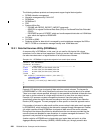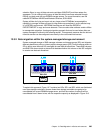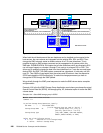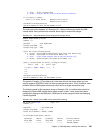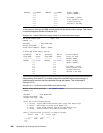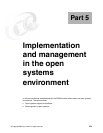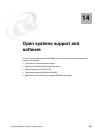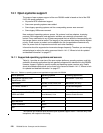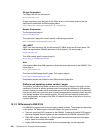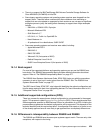272 DS6000 Series: Concepts and Architecture
13.6 Summary of data migration
The route which an installation takes to migrate data to one or more DS6800 storage servers
depends on requirements for service levels, whether application down time is acceptable,
available tools and cost estimates with certain budget limits.
When coming from an ESS 750 or ESS 800, Metro Mirror seems to be the natural choice, and
allows for concurrent data migration with almost no application impact or no impact when the
actual switch utilizes P/DAS, although it is quicker and easier to allow for a brief service
interruption and quickly switch to the new disk storage server. Because Metro Mirror provides
data consistency at any time, the switch-over to the new disk server is simple and does not
require further efforts to ensure data consistency at the receiving site. It is feasible to use the
GUI -based approach because migration is usually a one time effort. Command-line
interfaces such as TSO commands are an alternative and can be automated to some extent
with REXX procedures.
When the source disk servers are not compatible with the DS6800 and the migration is based
on a full volume, physical level, then there are options which depend on various
circumstances which are different for each installation. When TDMF or FDRPAS is available
and the customer is used to managing volume migration using these software tools, then it is
a likely approach to use these tools for a larger scale migration as well. In other
circumstances it might be feasible to include the migration as part of a total package when
installing and implementing DS6800 disk storage servers. This is possible through IGS
services which rely on FDRPAS, TDMF or Piper for z/OS. There is always DFSMSdss, which
is still popular, but this approach usually requires an outage of the specific application
systems.
Finally, the migration might be used as an opportunity to consolidate volumes at the same
time. After a decision has been made about the new volume size, which is preferably a
multiple of a 3390-1 or 1,113 cylinders, it is required to logically move the data sets. One
option is to rely on SMS-based allocation in a system-managed environment, combined with
DFSMSdss and logical data set copies targeted from individual source volume sets or entire
SMS storage groups. A variation here might be a combination of full volume physical copy for
the very first volume copied to a larger target volume, followed by further logical-based copy
operations with DFSMSdss after adjusting the VTOC and VTOC index information.
After the migration and storage consolidation you will be using a disk storage server
technology which will serve you with promising performance and excellent scalability
combined with rich functionality and high availability.



